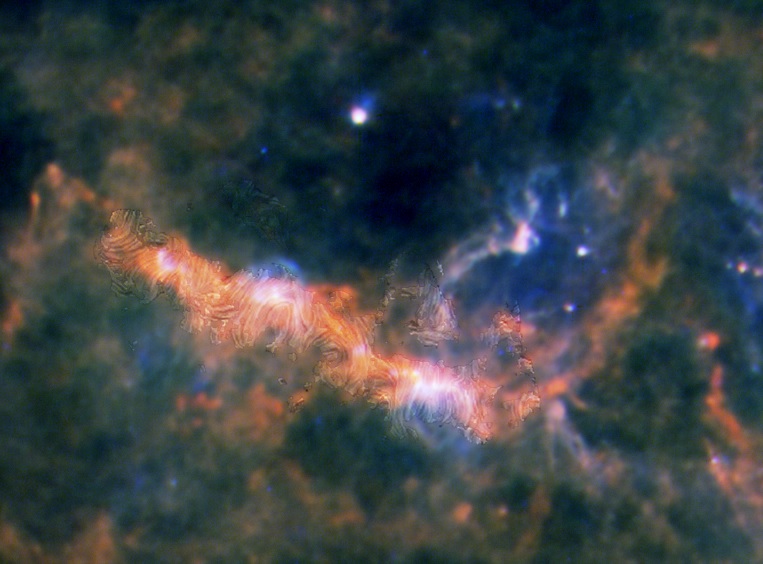The SOFIA flying telescope captured amazing images during its visit to Chile
The SOFIA telescope, mounted on a NASA Boeing 747SP, captured the first images of magnetic fields in a region of the Milky Way during its visit to Chile.
According to NASA, and as reported by our partner site Aeroin, most of the stars in our galaxy are formed within the arms of the spiral, and the magnetic fields «follow» these arms. The most widespread models indicated that these fields were aligned with the arms, but the SOFIA investigations seem to indicate that this is not the case.
The magnetic fields do not seem to follow the galactic spirals. Ian Stephens, an astrophysicist at Worcester State University, noted that «before SOFIA it was difficult to create high-resolution images of the magnetic field of galaxies.» Thanks to this telescope, a joint venture between NASA and the German Space Agency, now «we are able to obtain many measurements of the direction of the magnetic field, which allows us to further study these massive structures.»

The direction of the magnetic fields in the G47 arm, in an image captured by SOFIA – Image: NASAStephens is part of the FIELDMAPS project, the first effort focused on mapping the Milky Way’s magnetic field. Of the ten structures the group plans to measure, the first project completed by FIELDMAPS is G47, a giant filament within the Milky Way, measuring 200 light-years long and 5 light-years wide.
FIELDMAPS uses the HAWC+ polarimeter – one of the SOFIA instruments – for its observations to determine the alignment of galactic dust clouds, allowing astrophysicists to detect the direction of the magnetic field.
«Magnetic fields seem to strongly influence the rate of star formation in a galaxy. They can guide the flow and affect the amount and size of pockets of gas that will eventually collapse to form stars,» Stephens said. «By mapping their orientation we can estimate the relative importance of the magnetic field – versus gravity – in the star formation process.»
Thanks to SOFIA, the researchers were able to determine that the magnetic fields are strong enough to prevent such gas from succumbing to gravitational collapse. The magnetic fields in G47 «were complex and changed direction frequently.» This means that the fields in the less dense regions feed material into the denser regions, which in turn repel that material. Thus, it seems, the fields balance each other, generating some stability in the number of stars generated.

/https://aviacionlinecdn.eleco.com.ar/media/2021/07/1280px-SOFIA_in_air.jpg)
Para comentar, debés estar registradoPor favor, iniciá sesión